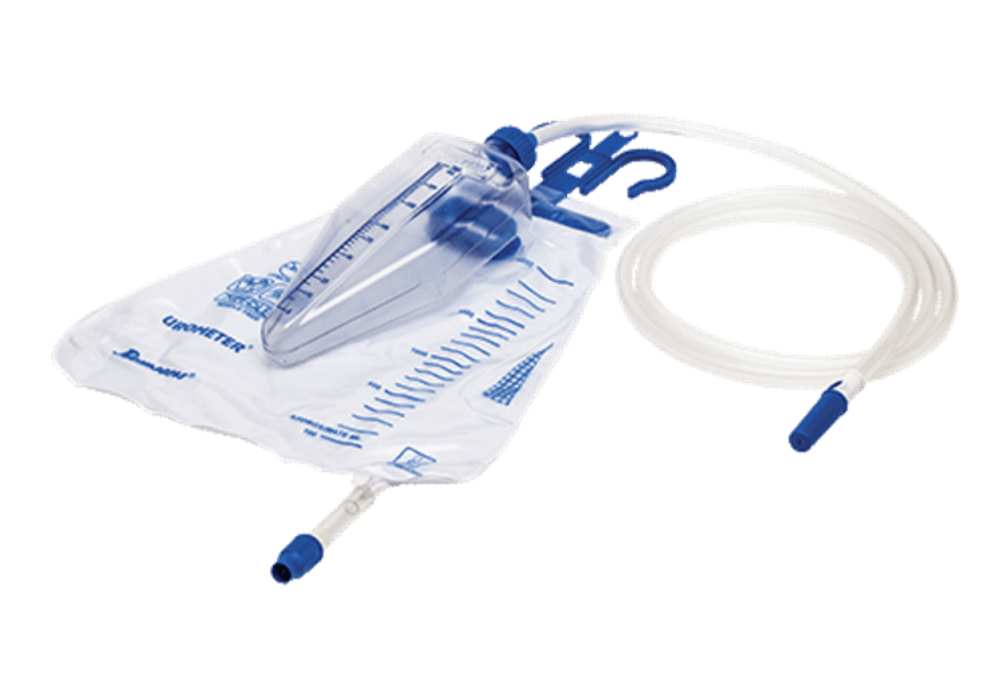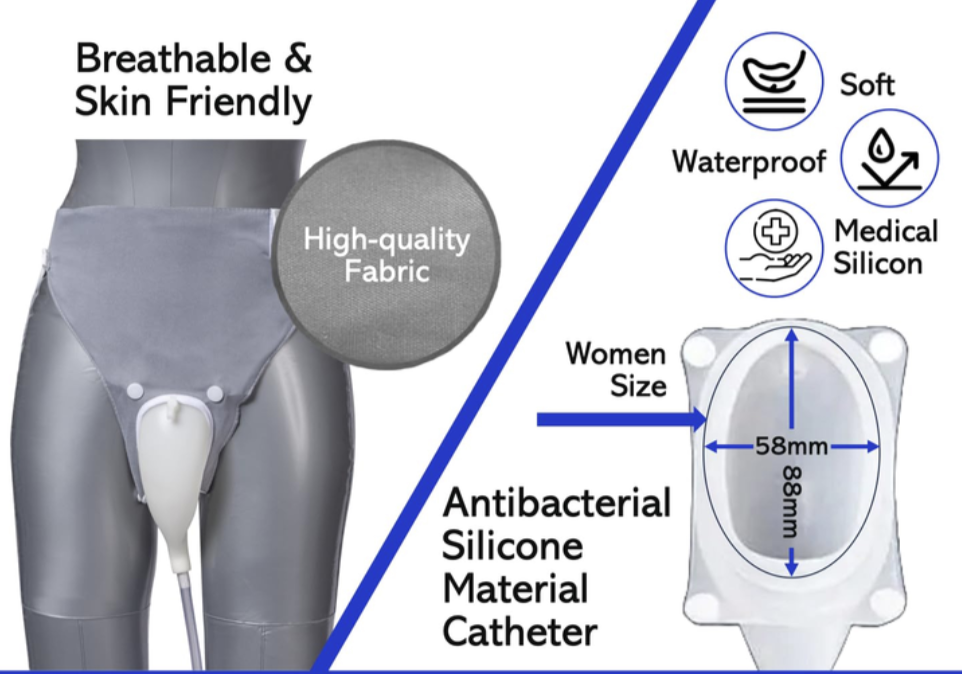Who Needs a Urine Bag and Why It’s Used


Types of Urine Collection Bags
Urine bags types come in different designs to suit specific patient needs, ensuring comfort, mobility, and effective urine management.
Leg Bags: Designed for ambulatory patients, these small bags attach to the thigh or calf with straps, offering discreet, comfortable urine collection during the day.
Bedside Bags: Ideal for bedridden patients or overnight use, these larger bags hold more urine, reducing the need for frequent emptying. They are hung on a bed rail or stand.
Wheelchair Bags: Made for wheelchair users, these bags attach securely to the frame, offering easy access while keeping the bag discreet and properly positioned.
Urology Drainage Bags: Used not only for urine collection but also for other fluids during urological procedures, such as bladder or kidney treatments.
How to Use Urine Bag for Male Patients
- Wash your hands thoroughly. Ensure the urine bag, catheter, and tubing are clean and properly connected.
- Gently insert the catheter into the urethra according to medical instructions. Secure it with medical tape if needed to prevent pulling or discomfort.
- Attach the tubing from the catheter to the urine bag. Make sure the connection is tight to avoid leaks.
- For leg bags, strap the bag around the thigh or calf, ensuring it’s not too tight.
- For bedside bags, hang it on a stand or bed rail below bladder level to allow proper drainage.
- Ensure the tubing is not kinked or twisted. The urine should flow freely into the bag without obstruction.
- Empty the urine bag before it’s full, preferably every 6–8 hours or as directed by the healthcare provider, to prevent backflow or infection.
- Clean the bag, tubing, and surrounding area regularly. Wash hands before and after handling the equipment.
How to Use Urine Bag for Ladies
Make sure to empty your drainage bag regularly. Smaller bags may need to be emptied several times a day, while your night bag usually only needs to be emptied once in the morning. Here’s how you can do it safely and easily:
- Try to empty your bag when it’s about half full. Waiting until it’s completely full can cause discomfort or leakage.
- Before you start, wash your hands with soap and water to lower the risk of infection. Avoid letting the bag or openings touch dirty surfaces like counters or toilets.
- Keep the bag below your waist or hip while emptying it to ensure proper drainage.
- You can empty it directly into a toilet or a container provided by your healthcare provider.
- Drainage bags may open in different ways—a spout you pull out, a clamp you open, or a twist-off cap. Whatever the method, be careful not to touch the spout or opening when emptying the bag.
- If you can, wipe the opening with rubbing alcohol using a cotton ball or gauze to keep it clean.
- Once emptied, close the clamp or screw the cap back on, then reattach the bag to your leg. Avoid placing it on the floor.
- Wash your hands again after finishing.
- It’s a good idea to change the leg you attach the bag to, ideally in the morning when you switch from your night bag to your day bag.
Urine Bag Disposal Guide: Safe and Hygienic Practices
- Make sure the bag is fully emptied before disposal to avoid spills and odor.
- Close the opening securely using the clamp or cap. If possible, wrap the bag in a disposable plastic bag to contain any remaining moisture.
- Dispose of the used urine bag in a designated medical waste bin or a sealed trash bag, as advised by healthcare providers.
- Always wash your hands with soap and water after handling and disposing of the bag to prevent contamination.
- Some areas have specific regulations for medical waste disposal. Check with your healthcare provider or local authority for proper disposal methods.
Related Products

Fastest by 29th Oct
COD
Mexple UroActive Wearable Urine Collection Bag Kit
₹1,133
₹2,99962% OFF

Fastest by 29th Oct
COD
Mexple UroWomen Wearable Urine Collection Bag Kit
₹1,432
₹2,99952% OFF

Fastest by 24th Oct
COD
Romsons Uro Flow Urine Collection Bag
₹1,020
₹3,59072% OFF

4.7
Fastest by 21st Oct
COD
Romsons Romo-10 Urine Collection Bag
₹839

Fastest by 29th Oct
COD
Mexple UroMen Wearable Urine Collection Bag kit
₹1,193
₹2,99960% OFF

FAQs









